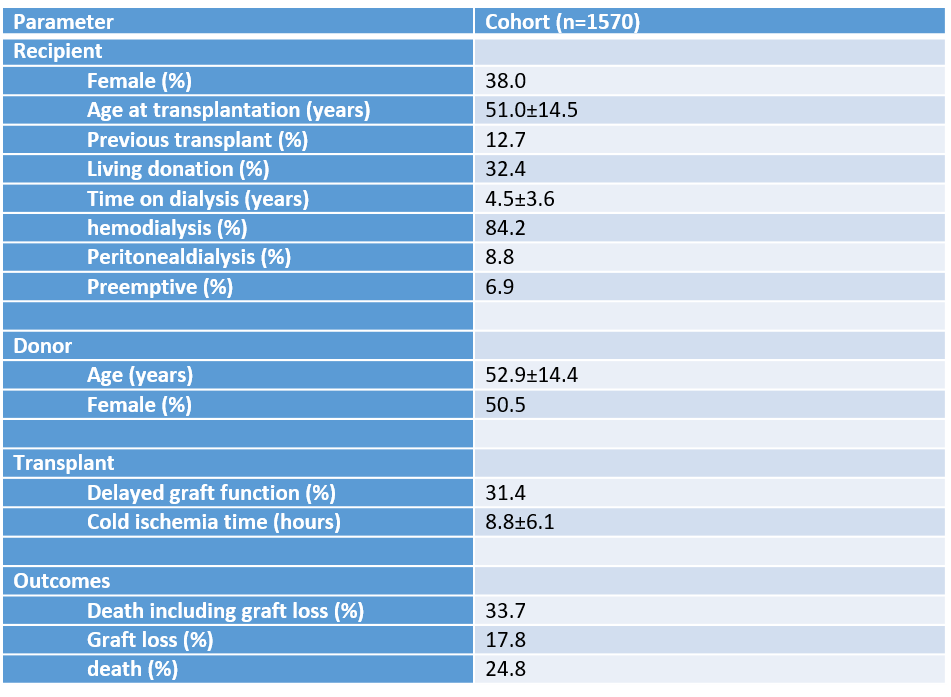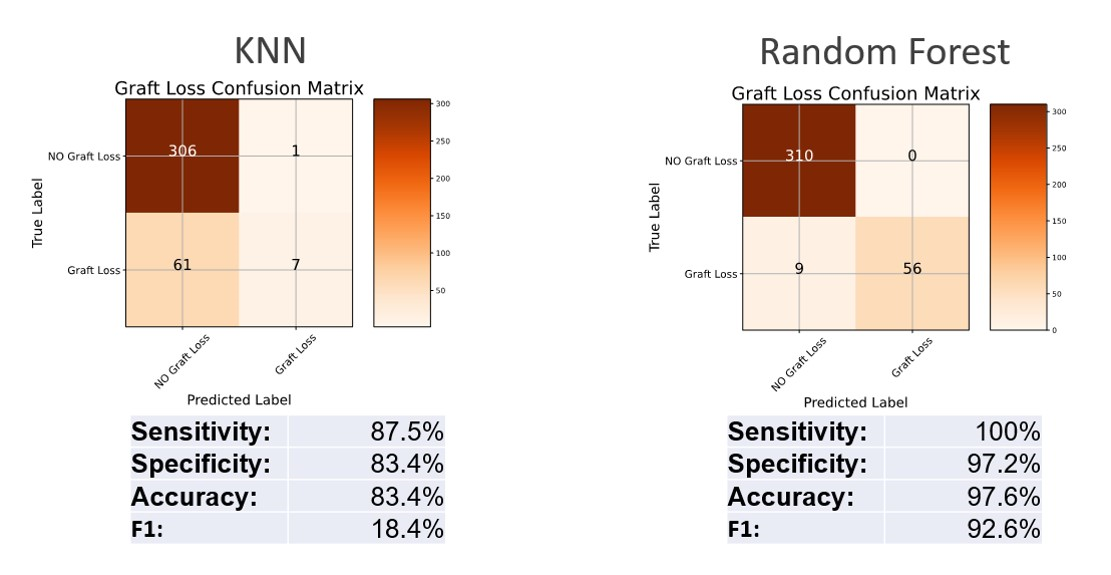Risk Classification Models for Kidney Graft Failure
M. G. Naik1, K. Budde1, D. Telmo Neves2
1Medical Department, Division of Nephrology and Internal Intensive Care Medicine, Charité, Berlin, Germany, 2Intelligent Analytics for Massive Data, German Research Center for Artificial Intelligence, Berlin, Germany
Meeting: 2021 American Transplant Congress
Abstract number: 456
Keywords: Kidney transplantation, Prediction models, Risk factors, Survival
Topic: Clinical Science » Organ Inclusive » Machine Learning, Artificial Intelligence and Social Media in Transplantation
Session Information
Session Time: 7:30pm-8:30pm
 Presentation Time: 7:40pm-7:50pm
Presentation Time: 7:40pm-7:50pm
Location: Virtual
*Purpose: Longterm graft survival after kidney transplantation is stagnant over the last decades. An individual risk assessment for graft failure is needed. In our project “TBox”, we are developing an end to end data analysis pipeline for that individual risk prediction. Now the focus is on having a set of classification models to detect patients at high risk of graft loss to adapt the follow-up care in our outpatient department.
*Methods: All patients transplanted at Charité Mitte between 2000 and 2019 were included. Using raw data (demographics of donor, recipient and transplant) from Charité´s transplant database “TBase” firstly exploratory data analysis was applied continuously to improve data quality and increase insights into the data. Using that curated data two classification models, KNN classification algorithm vs. Random Forest ensemble method for classification were created. The data was split into 75% training 25% test set with averaging the accuracy score and standard deviation for 10 runs in each experiment.
*Results: After applying data preprocessing to the selected cohort (N=1570, 62% male recipients, 32% living donation, 51±14years, 18% graft loss), 1483 patients were eligible for data analysis using 84 features (figure 1). The matrices of the models are shown in figure 2. The KNN model achieved an AUC 82.8% (SD 1.7%), with a sensitivity, specificity, accuracy and F1-score of 87.5%, 83.4%, 83.4%, and 18.4%, respectively. The Random Forest model showed an AUC of 97.3% (SD 0.7%) with a sensitivity, specificity, accuracy, and F1-Score are 100%, 96.8%, 97.3%, and 92.6%, respectively.
*Conclusions: These first encouraging and promising model results will help to determine graft failure risk and individual decision making for follow-up care after renal transplantation. Next, the data analysis pipeline will be extended for longitudinal and home-monitoring data to create prediction models based on time-aware neural networks to assess the individual risk dynamically, even outside the hospital. Factors to lower the risk for graft loss will be investigated in studies to improve long-term outcomes.
To cite this abstract in AMA style:
Naik MG, Budde K, Neves DTelmo. Risk Classification Models for Kidney Graft Failure [abstract]. Am J Transplant. 2021; 21 (suppl 3). https://atcmeetingabstracts.com/abstract/risk-classification-models-for-kidney-graft-failure/. Accessed December 19, 2025.« Back to 2021 American Transplant Congress


